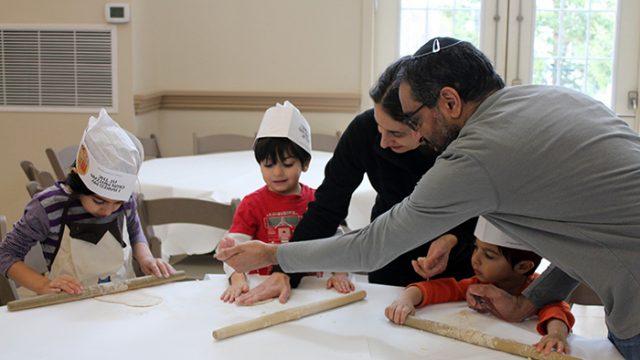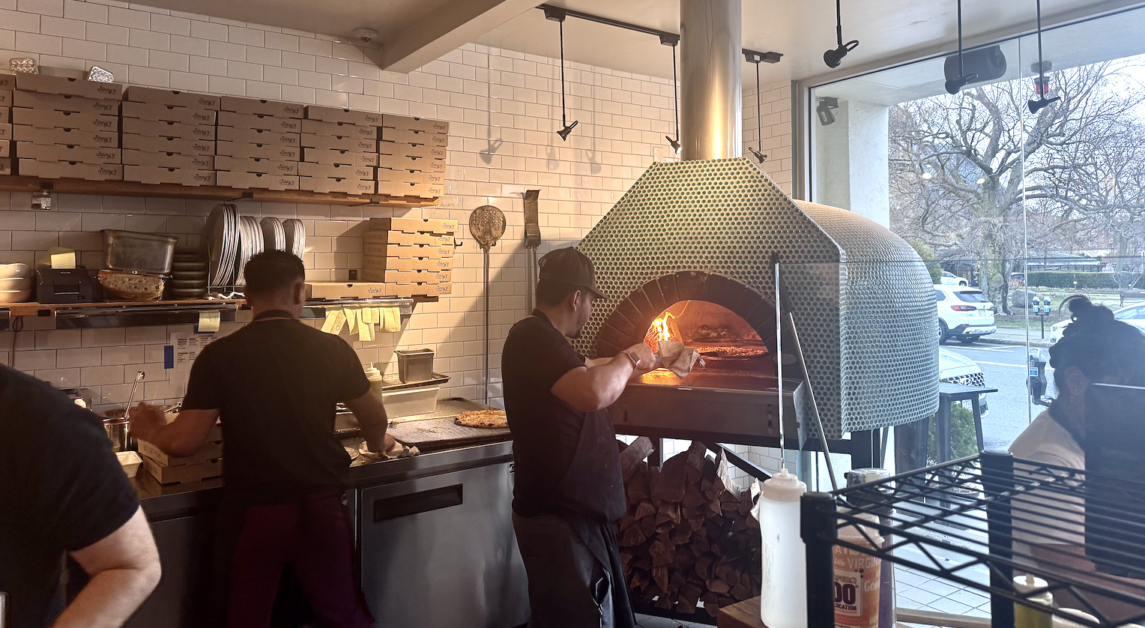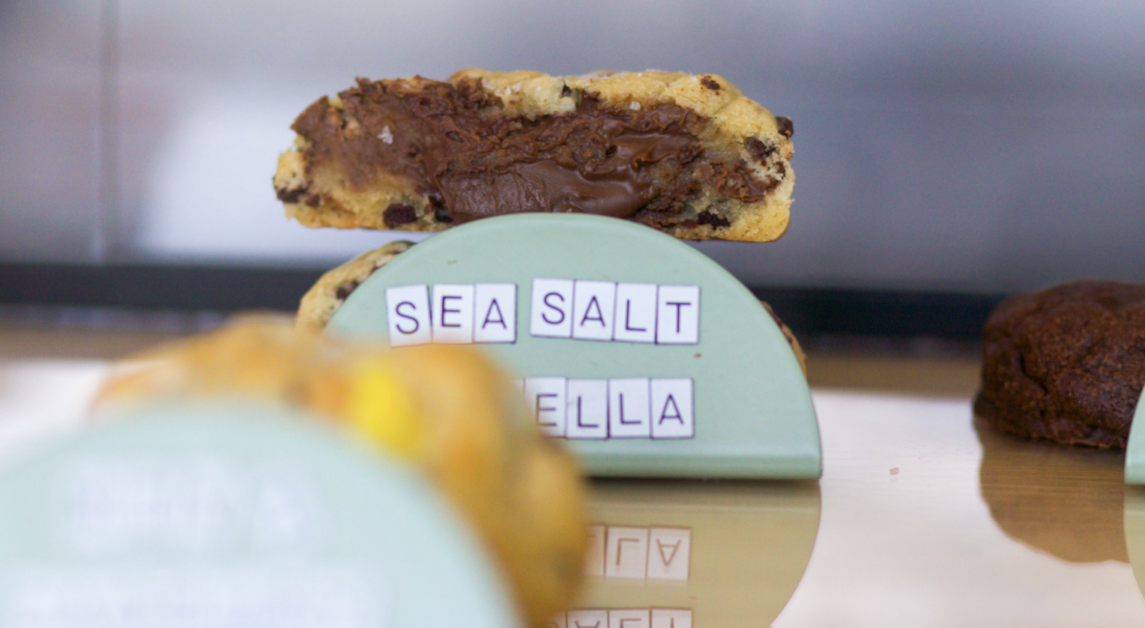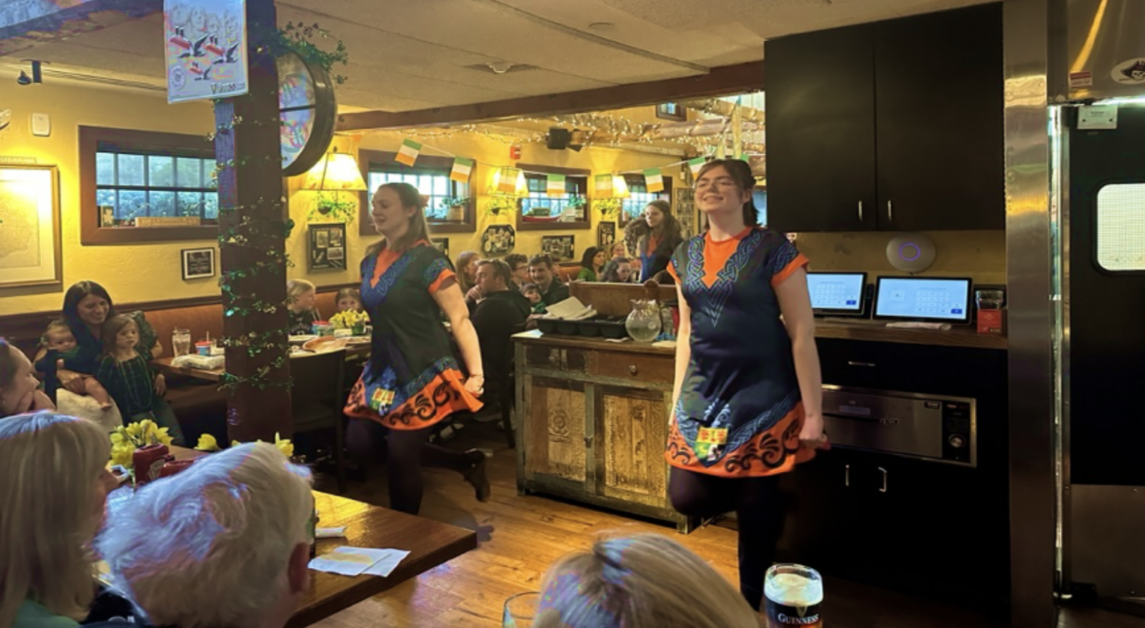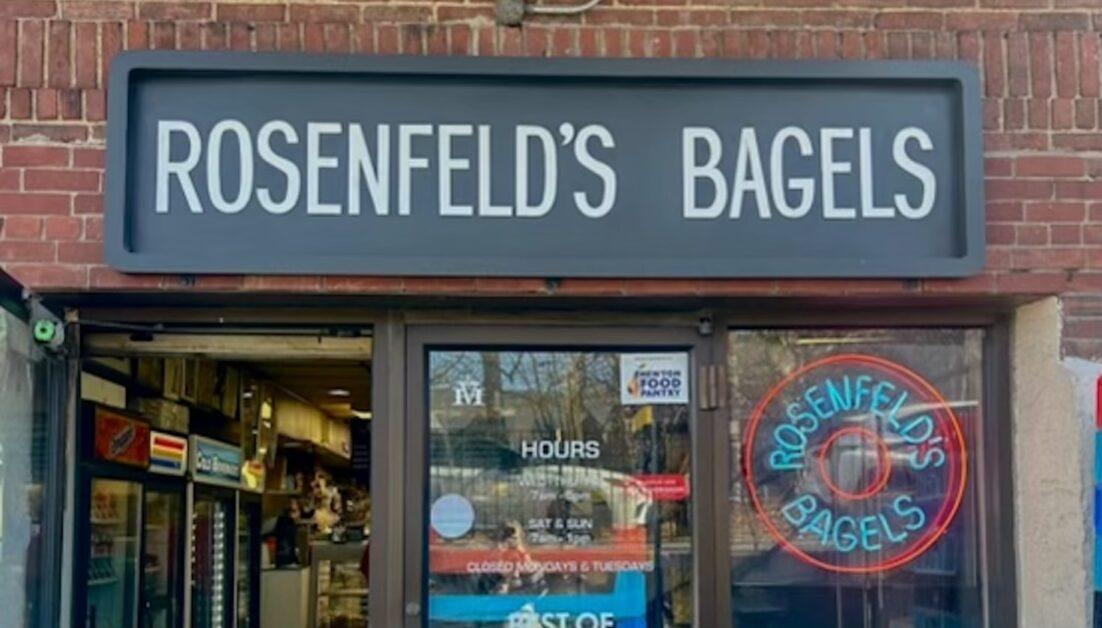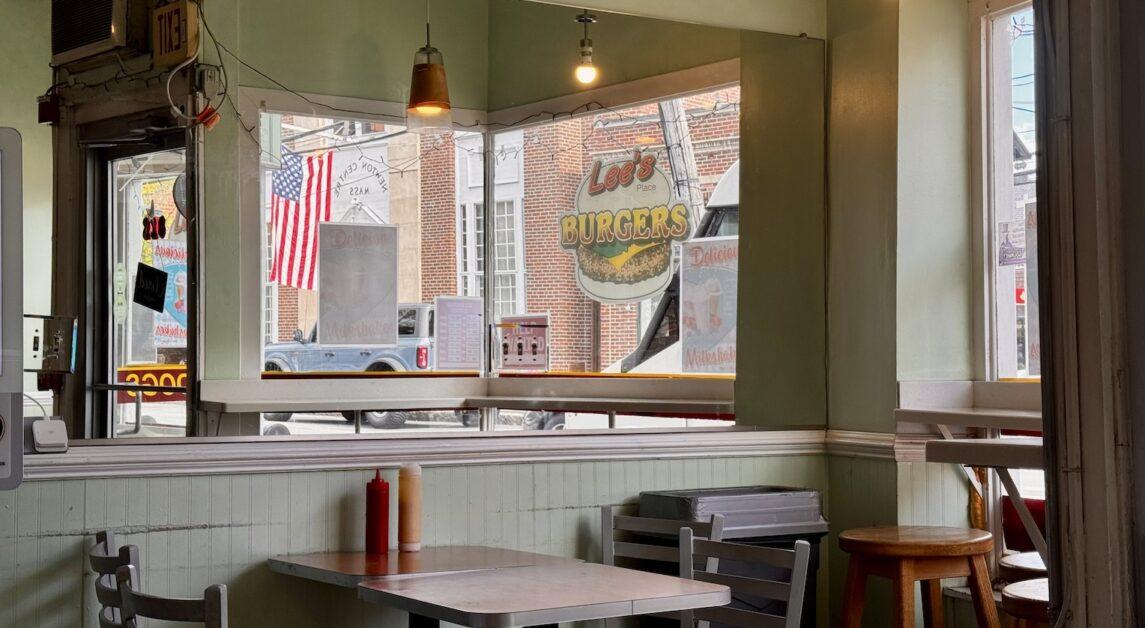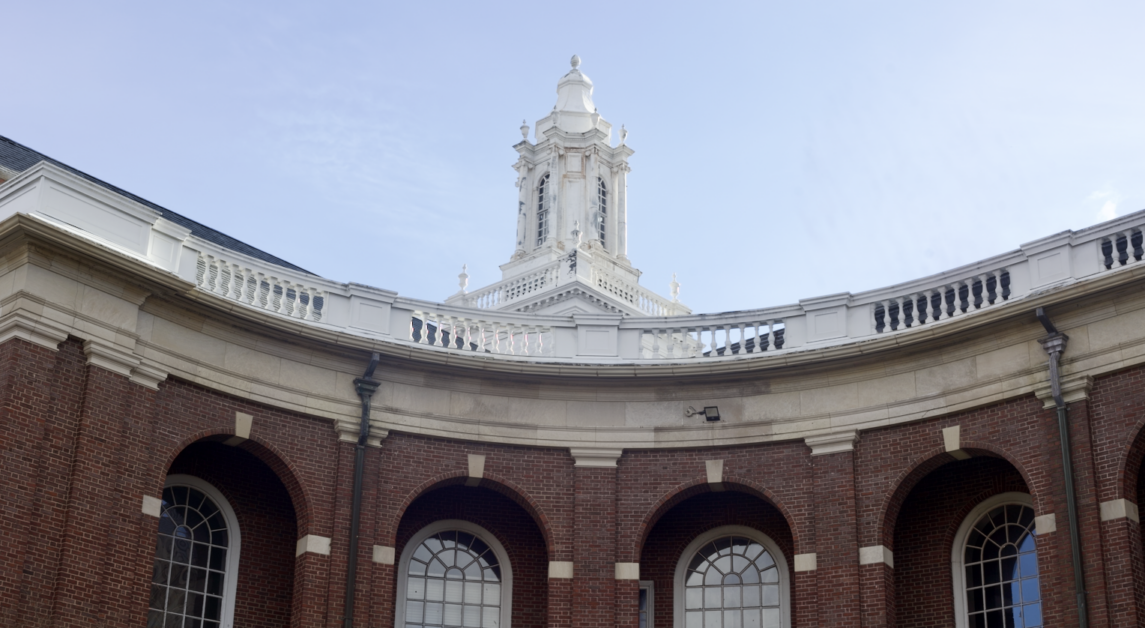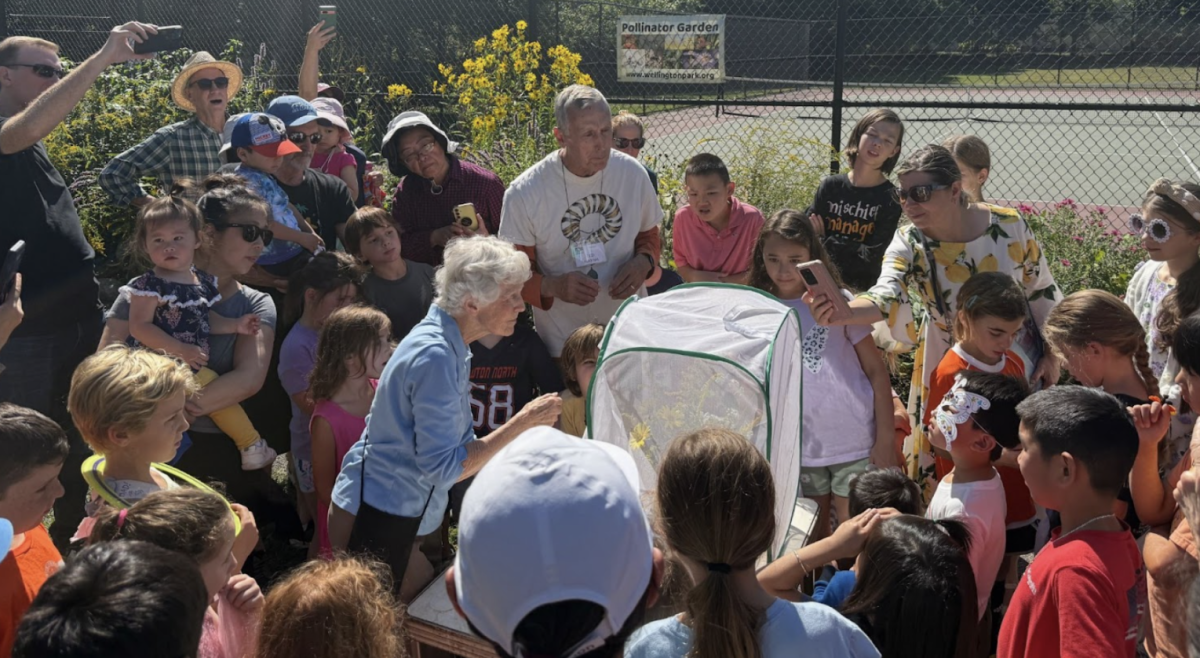The Model Matzah Bakery was held on Sunday at Beth Menachem Chabad of Newton, hosted by Rabbi Shalom Ber Prus and Itty Prus. This event brought children together for a hands-on educational experience exploring the history and significance of Passover, and of matzah.
Matzah, or matzo, is an unleavened flatbread that plays an important role in the celebration of Passover, an eight-day festival that is celebrated from the 15th through the 22nd of the Hebrew month of Nissan. This holiday commemorates the emancipation of the Israelites from slavery in ancient Egypt. This year, Passover begins on Monday, April 10 at sundown and will continue through the evening of Tuesday, April 18.
As the event began, Prus explained that the eating of matzah originated from the Jews having to leave Egypt in such a hurry that they could not wait for their bread dough to rise. Matzah also plays an important role in the Passover Seder. The focal points of the Passover Seder are eating matzah and bitter herbs; drinking four cups of wine or grape juice; and the recitation of the Haggadah, which is a liturgy that describes the story of the Exodus from Egypt.
In Hebrew, this holiday is known as Pesach, which means “to pass over.” The festival is divided into two parts. The first two days and the last two days are full-fledged holidays where observers do not go to work, drive, write, or switch on or off electronic devices. The middle four days are intermediate days where most forms of work are allowed.

The first step in making the matzah was grinding up wheat kernels to get flour. To do this, the wheat needed to be broken off its stem and rubbed until the kernels loosened. Once enough kernels were separated they were all combined into a large bowl that was passed around. The children then each took a try turning the hand grinder, which ground up the wheat kernels into flour.
The next step in making matzah was adding water to the flour. The matzah needed to be baked within 18 minutes of the water contacting the flour, and Prus explained how, in real-life matzah bakeries, there are two separate rooms for the water and the flour so they don’t accidentally mix. This 18-minute rule stems from the idea that dough begins to enter the leavening process eighteen minutes after it gets wet. Once the dough was made by combining the water and flour, the kids were each given a piece of dough that they could then roll flat to make their matzah. Once the dough was flat, holes were poked in the dough to prevent it from rising, and the dough was then put into the oven to bake until it turned brown. While the kids waited for the matzah to bake, they had fun decorating their own puzzles and envelopes that would be used to hide matzah during Passover. The kids also drank grape juice as Prus explained how at the seder, either four cups of wine or four cups of grape juice are the traditional drink.
Another Passover observance is the eating of the horseradish root. The root is so bitter that it brings tears to the eyes when it is smelled or eaten. According to Jewish tradition, this bitterness is important because it reminds each participant in the seder of the great affliction that the Jewish people endured while in Egypt. The kids took turns helping Prus peel the root, and once it was peeled it was then cut up and ground in a food processor.
The kids then had the opportunity to eat their matzah while finishing their Passover crafts. The flat, unflavored matzah is seen as the embodiment of humility, which is why it is so important in the celebration of Passover.
“The Matzah Bakery provides children with a very fun experience but also helps develop a profound appreciation for the holiday,” Prus said. “Today, more than ever, parents appreciate opportunities like this to share their Jewish heritage and tradition with the next generation.”
Featured Image by Celine Liu / Heights Staff

